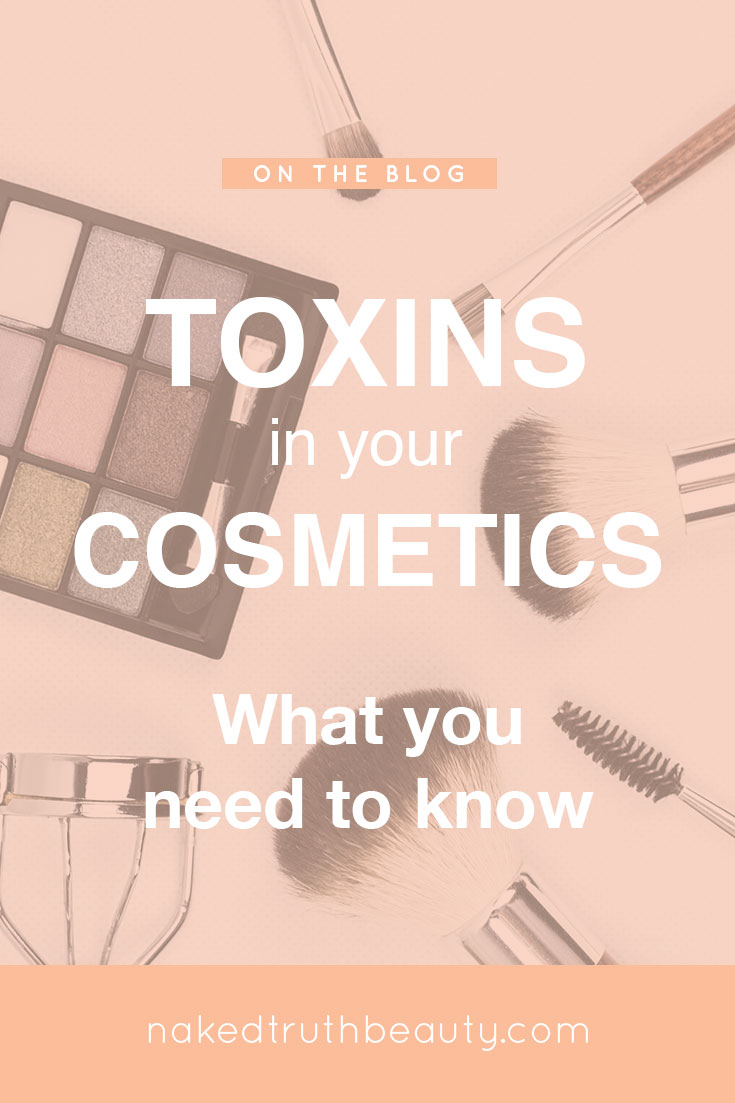Toxins in Your Cosmetics and What You Need to Know
WHY CARE?
Let's talk about rules! I promise, this will be exciting.
While "rules" may not sound like a thrilling conversation topic, this information is the foundation for all of the "green" chatter we see when hunting for personal care products. It is also the reason why I urge you to be your own personal regulatory agency.
Generally speaking, there is a shared assumption among U.S. consumers that stores wouldn't sell cosmetics products if they were harmful to human health. This is a very reasonable assumption. If the FDA closely regulates food and drugs, doesn't it do the same for cosmetics, another category under its purview?
The short answer is "yes," but the more accurate answer is "no."

THE UNOFFICIAL RULE: "ASK FORGIVENESS, NOT PERMISSION"
According to FDA regulations, it is against the law for a cosmetic to contain any ingredient that "makes the product harmful." Great! However, the FDA itself does not test ingredients (excepting some color additives). Rather, it is up to the cosmetics manufacturer to test all ingredients and products for consumer safety. With so many cosmetics companies in operation, even this seems reasonable. Unfortunately, though the FDA asks manufacturers to test for safety, it does not have the authority to require cosmetics manufacturers to disclose safety data.
In effect, the rule summarizes to "Please test your products for safety, but we can't ask to see the data proving it."
Don't worry, corporations would never abuse the honor system.
Plus, if the FDA thinks an ingredient may be harmful, it is the FDA's legal responsibility to prove it. Doing so requires widespread monitoring and testing, and the building of robust cases against any questionable chemicals or compounds. As a result, the FDA has a limited ability to enforce its "do no harm" mandate.
The consequence of this policy is an "ask for forgiveness, not permission" system. For example, the FDA has issued warning letters (yes, warning letters) to manufacturers of the formaldehyde-releasing Brazilian Blowout treatment, but the product had already been in use in the U.S. for years by that time. The FDA's letters indicate what needs to be fixed in order to be compliant with the law, but the follow-up on such requests is lacking. Long story short, the FDA's recognition that the Brazilian Blowout releases a toxic chemical linked with a slew of health problems, including cancer, has had little impact on the actual use of the product.
THE MYTH OF THE SAFE DOSE
Another problematic FDA policy is the decision that certain known toxins may be present in cosmetics so long as they are in "safe doses." For example, the FDA has determined that levels of lead present in lipsticks are not in high enough doses to cause harm if the product is used "as intended." However, a different governmental organization, the National Institute of Environmental Health Sciences, states that no level of lead is safe. Interestingly, the Mayo Clinic asserts that lead poisoning occurs when the chemical builds up in the body over months or years, a fact that seems to directly contradict the notion of a "safe dose" if those many small exposures continue over a long period of time.
Another troubling safe dose example is the pervasive use of endocrine-disrupting compounds (EDCs), such as phthalates (plasticizers and solvents) and parabens (preservatives).
Phthalates are common "fragrance" components in personal care products, but you'll never find find them on an ingredients list, as "fragrance" is protected from disclosure a "trade secret." (We'll get to labeling loopholes/regulations another time.) Parabens, on the other hand, are easier to spot at the bottom of ingredients lists with a few prefix variations (for example, "propylparaben").
These ubiquitous endocrine disruptors deserve their own article, but put very simply, you should care about the presence of EDCs in your products because they can mimic the body's hormones, block normal hormone signaling, and interfere with the body's control mechanisms of hormones and their receptors. The impact of this is risk to reproductive, developmental, neurological, and immune systems in both humans and wildlife, with in-utero children, adolescents, and pregnant women being the most vulnerable.
Despite the fact that tiny hormone shifts are responsible for some our bodies' most amazing processes, such as puberty, the FDA considers low doses of hormone disruptors to be safe.
Unfortunately, this "safe dose" logic doesn't take into account some very important factors.
First, the notion of a safe dose is based on the fundamental assumption that it is a single dose. However, a survey of 2,300 people by the Environmental Working Group found that the average number of personal care products used daily was 9, with an average of 126 unique ingredients. I don't know about you, but when I tally up every product that touches my skin, from soap, to lipstick, to hair cream, I'm usually easily above 9. So what happens when each of those 9 products has a "safe dose" of the same chemical? What happens we we use those 9 products every day for decades? The truth is we don't really know because very little research has been conducted on long-term, daily exposure to small doses of toxins. The effects of the high doses of endocrine disruptors likely will not truly be known for generations.
Second, the "as intended" directive on product labels is often ignored. These labels are very important, as they're intended to limit exposure routes (among other things), but we often ignore them because "how bad could it be?" How many times have you smeared a product over broken skin, licked lipstick off your lips, or applied eye cream a little too close to the lash line? Me too.
Third, the safe dose is only looking at one point in the life cycle. When we use small doses of toxins, we wash and flush them into landfills, oceans, and water supplies. There, these chemicals bioaccumulate in the environment, and biomagnify through the food-chain. In other words, what goes around comes around, and we'll be seeing those chemicals again, but maybe in larger doses. For example, think about the high mercury warning for consuming fish, and the fact that mercury is allowed in mascara (mercury is dumped in the environment in a lot of other ways - this is but an example).
My point is that I'm not so sure a safe dose is all that safe.
BE YOUR OWN REGULATOR
While there are many more layers to the discussion of cosmetics ingredients, it's clear that safely deciding which products to use is not as simple as pulling an item at random off the drug store shelf.
It's true that we're exposed to all sorts of toxic chemicals, natural and synthetic, all the time in our everyday lives. However, we each have the ability to reduce these daily exposures by the simple act of choosing not to buy them or to put them on our skin. Still, I know from personal experience that figuring out which products are truly "good" can be its own adventure. That's why Naked Truth Beauty exists -- to take the guess work out of finding good products, and to give you the information and resources necessary to make good choices for yourself.
Thanks for coming along for the ride.




